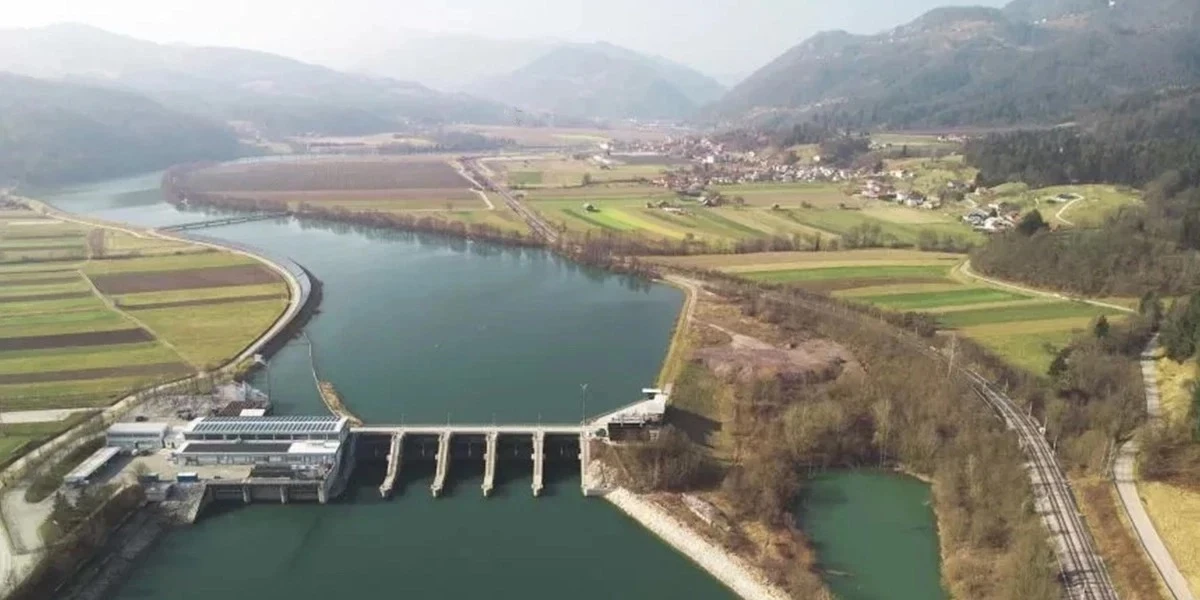

Water has always been more than a resource. It’s life itself. Every civilisation, every city, every home has grown around it. We drink it, we grow food with it, we turn it into energy. Yet, despite its importance, we still struggle to manage it wisely. Droughts on one hand, floods on the other—our relationship with water has always been complicated.
With time, engineers learned how to tame it. They constructed dams, canals, and reservoirs —infrastructure that was capable of storing, managing, and yielding water on demand. The sluice gate is a small yet crucial component of this system. It doesn't look much: it is simply a metal gate that opens and closes. But that flow will make a city drown or stay dry, will farmers get water or lose their harvest?
A sluice gate in dam works like a valve for rivers. When the water level rises, the gate is raised to allow excess water to flow out safely. When the level drops, it’s lowered again to hold the water back. In large dams, these gates are built into the walls, sometimes at the surface and sometimes deep below. The ones placed at the bottom are called under sluice gates—they help flush out the silt that settles over time, keeping the reservoir clean and efficient. Without them, the dam slowly fills up with mud, and its capacity to hold water goes down year after year.
For decades, these gates were operated manually. Someone had to physically go there, often during bad weather, and turn heavy wheels to open or close them. Decisions depended on experience and judgment. Sometimes it worked perfectly; other times, not fast enough. If a sudden storm hit, by the time the operator reached the site, the water might already have crossed the danger mark. On the other hand, holding water too long could waste it or damage the dam itself.
That system worked in a bygone era. But today, when everything moves faster and weather patterns continue to surprise us, we need something better. That’s where IoT—short for the Internet of Things—has quietly changed the story.
The idea is simple: connect the dam gate to the internet. Attach sensors that can measure how much water is in the dam, how quickly it’s flowing, how much pressure is building up, and where exactly the gate is positioned. All that information is sent in real time to a control room or even a smartphone. The operator doesn’t have to be physically present anymore. They can see everything happening live and move the gate with a single command, even from miles away.
It sounds like a small change, but it transforms all. Suppose it is pouring down at night. The system sends an alert immediately, as opposed to waiting for someone to inspect the site. The gate even opens automatically before the water reaches a dangerous stage. When the rain ceases, it closes up again. No panic, no delay. Just quiet, steady control.
These smart sluice gates also make maintenance easier. The sensors monitor the behavior of the machinery. If something starts vibrating oddly or moving more slowly than usual, the system notices and reports it. The team can fix the issue before it becomes a breakdown. That means fewer surprises, fewer emergencies, and a much longer life for the equipment.
One company that has made this technology practical is Yooil Envirotech. They design gates that don’t just look strong—they are strong, built to handle decades of pressure, yet modern enough to communicate like any other smart device. Their systems are already being used in places where water control is critical: in dams that feed cities, in canals that water crops, and even in urban drainage systems that prevent flooding during monsoon rains. What’s special about Yooil’s approach is that their gates can fit both new projects and old ones. An existing dam doesn’t need to be rebuilt from scratch to become smart; it can simply be upgraded.
When you think about where these gates are used, it’s a long list—dams, reservoirs, irrigation channels, flood control systems, power plants, city drains. Each of them depends on precise control. A few minutes of delay or a wrong decision can make the difference between safety and disaster. The introduction of automation means fewer chances for human error and faster, more reliable responses.
The real promise of this technology lies in what’s coming next. IoT has already made the gates “smart,” but when combined with artificial intelligence, they’ll also become predictive. They’ll learn from weather data and river patterns. If a storm is expected, the system will prepare in advance, adjusting water levels even before the rain begins. If it’s a dry season, it will conserve every drop. In other words, the gates will start thinking ahead.
Such foresight could transform how entire regions manage their water. Think of farmers who depend on irrigation schedules, or cities that face flash floods every year. A smart dam sluice gate could mean fewer losses, better planning, and cleaner reservoirs. Under sluice gates, which remove silt, will also help maintain water quality and the health of aquatic life.
This may all look like technology speaking, but it is really all about people. It is all about making sure that families do not lose their homes to floods. It is the act of providing water to the farmers at the time they require it. It is the cities remaining secure and the dams holding on longer.
Ultimately, it is not about smarter gates. It's smarter water. It is about applying knowledge, information, and innovation to save what sustains us. As the world becomes warmer and the weather becomes more unpredictable, such tools will enable us to stay one step ahead. When you pass by a dam or a canal, remember that beneath the smooth surface, there may be a small but ingenious gateway that helps maintain harmony in the most valuable flow in the world.
Smart sluice gates are not just pieces of metal and sensors. They represent a quiet evolution in how we think about water—less reaction, more preparation. They take a job that once needed constant human effort and make it smoother, safer, and more reliable. Yooil Envirotech’s work in this space shows how traditional engineering and digital technology can come together for something that directly benefits society.
